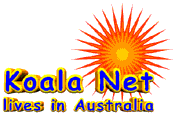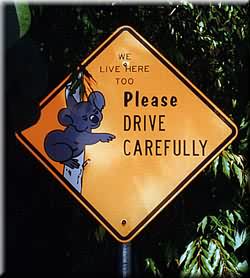
Australia's geography & history
Australia is the sixth largest nation in the world and is
the only one to occupy an entire continent
Howie's Place Noosa
Number One Hastings
Face masks made in Australia

|
Australia's geography & historyAustralia is the sixth largest nation in the world and is
|
Holiday Accommodation Howie's Place Noosa Number One Hastings Face masks made in Australia | ||
|
About Noosa Australian Slang Coloured Sands Contact European Settlement Fauna & Flora Fraser Island Geography & History Links Paintings Photographs Selling your home World Time Privacy Home & Site Map Face masks made in Australia |
 Its land mass of nearly 7.7 million km² makes it the sixth largest country in area after Russia, Canada, China, the United States and Brazil. It is the flattest and (after Antarctica) the dryest of continents, yet it has extremes of climate and topography.
Its land mass of nearly 7.7 million km² makes it the sixth largest country in area after Russia, Canada, China, the United States and Brazil. It is the flattest and (after Antarctica) the dryest of continents, yet it has extremes of climate and topography.
There are rainforests and vast plains in the north, snowfields in the south east, desert in the centre and fertile croplands in the east, south and south west. About one third of the country lies in the tropics. Australia has a coastline of 36,735km - if it were possible to drive non-stop along the entire coast at 60 km/h it would take about 24 days to complete the trip. Queensland comprises the north-eastern part of Australia and ranges from the Tropics to more temperate areas. The tip of Queensland's Cape York is the continent's most northerly point (latitude 10°41'S) and the most northerly town is Thursday Island. Australia is the world's smallest continent and the sixth largest country being equal in area to the USA without Alaska or double the size of Europe excluding Russia. The continent is one of the oldest land masses - continental bedrock exposed by erosion is more than 3,000 million years old - and is the flattest of the continents because it lies near the centre of a tectonic plate. The average elevation is less than 300 metres, compared with the world's mean of about 700 metres. The Australian Alps in the south east contain Australia's highest ground, the highest point being Mount Kosciusko (2,228 metres). More than one-fifth of its land area is desert, more than two-thirds being classified as arid or semi-arid, unsuitable for settlement. The coldest regions are in the highlands and tablelands of Tasmania and the south-eastern corner of the mainland. The hottest temperature recorded was 53°C (127°F)at Cloncurry in Queensland in 1889. Australia is the only continent without current volcanic activity - the last eruption took place 1400 years ago at Mt. Gambier. Australia is an independent Western democracy with a population of more than 20 million. It is one of the world's most urbanised countries, with about 70 per cent of the population living in the 10 largest cities. Most of the population is concentrated along the eastern seaboard and the south-eastern corner of the continent. Australia's lifestyle reflects its mainly Western origins, but Australia is also a multicultural society which has been enriched by nearly five million settlers from almost 200 nations. Four out of 10 Australians are migrants or the first-generation children of migrants, half of them from non-English speaking backgrounds. They come to Australia for various reasons - partly because of the climate, partly because of our wonderful lifestyle, partly because the police are after them, but mainly because of the shame of having been born in a country with more people than sheep. Isolation of the Australian island-continent for 55 million years created a sanctuary for the flora and fauna. We have about 280 species of mammals of which almost half are marsupials. The rest are either placental mammals or monotremes and most are unique to Australia. Australia's national anthem, Advance Australia Fair, is a revised version of a late 19th-century patriotic song. It was declared the national anthem in April 1984, replacing God Save the Queen, which was designated the Royal Anthem. Waltzing Matilda, Australia's best known song, was thought to be unsuitable for state funerals! In the same year, Australia officially adopted green and gold as its national colours. Australia's official language is English, by common usage rather than law. Australian English does not differ significantly from other forms of English, although some colloquial and slang expressions are unique.
Australia's coat of arms - the official emblem of the Australian Government - was granted by King George V in 1912. The arms consist of a shield containing the badges of the six States. The supporters are native Australian fauna - a kangaroo and an emu. A yellow-flowered native plant, the wattle, also appears in the design. Australia's national day, Australia Day, on 26 January, marks the date in 1788 when Captain Arthur Phillip, of the British Royal Navy, commanding a fleet of 11 ships, sailed into Port Jackson (Sydney Cove). Phillip formally took possession of the eastern part of the continent for Britain and established a settlement, now Australia's largest city, Sydney. Air travel and the great variety of Australia's attractions are combining to bring more international tourists to Australia every year. Overseas tourists are drawn by Australia's sunshine, sandy beaches, the vast outback, rainforests, the Great Barrier Reef, unique flora and fauna, the Sunshine Coast of Queensland, the attractions of the cities, Australia's friendly multicultural society, and the safe and welcoming environment. Tourism is one of Australia's largest and fastest-growing industries. In 1992, 2.6 million international tourists visited Australia. Much of the information on this page has been gleaned from Australia's International Public Affairs branch of the Department of Foreign Affairs and Trade and is available in much more detail at About Australia. |
Advertisements
|

|
© 1996-2024, Koala Net except where stated. All rights reserved. Design © 1996-2024, Koala Net & Western Web Directories. All rights reserved. Technical comments |
Privacy Policy |